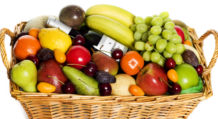Schools across the United States purchased $789 million in local foods from farmers, ranchers, fishermen, and food processors and manufacturers in school year 2013 – 2014, according to results from the U.S. Department of Agriculture (USDA) Farm to School Census released today. That represents a 105 percent increase over the 2011-2012 school year when the first census was conducted, signifying the deepening commitment of schools nationwide to bring local food into the cafeteria and strengthen their local economies.
“An investment in the health of America’s students through farm to school programming is also an investment in the health of local economies,” said Agriculture Secretary Tom Vilsack. “Nearly half of schools report that they intend to buy even more local foods in future school years, indicating that farm to school programs will continue helping our children and our communities flourish.”
Schools report that farm to school programs can increase the number of students purchasing school breakfast and lunch, improve consumption of healthier foods at school, and reduce plate waste. The programs are often also heavily focused on nutrition education, helping teach children where their food comes from and exposing them to lessons about healthy eating. The census data show that school gardens, which can be both teaching tools and a sources of fresh produce, have nearly tripled over the past two years.
At the national level, 42 percent of school districts that responded to the census are operating farm to school programs as of the 2014-2015 school year, and another 16 percent – more than 2,000 districts – have plans to start in the future. The census results show that farm to school programs exist in every state in large and small, rural and urban schools alike. These schools are incorporating local foods throughout the day including school lunch, school breakfast, supper programs, and/or snacks.
The newly updated Farm to School Census website allows users to find information about farm to school programs in their state and in their particular school or district. The site also names three top school districts in each state that boast higher than average investment in local food purchasing. In addition, users can vote for a school that they believe administers a creative, innovative, and/or exemplary farm to school program for the “One in a Melon” award. Nominations will be accepted through April 15.
In order to establish realistic goals with regard to increasing the availability of local foods in schools, USDA conducted the first nationwide Farm to School Census in 2013. USDA conducted a second Farm to School Census in 2015 to measure progress towards reaching this goal. In 2015, USDA surveyed over 18,000 public, private and charter school districts and 12,585 school districts responded for a response rate of approximately 70percent. Data were collected through an online survey and through a printable mail-in questionnaire. To view the full results, visit https://farmtoschoolcensus.fns.usda.gov.
Farm to School is part of the Office of Community Food Systems and is one of many initiatives of USDA’s Food and Nutrition Service (FNS) aimed at improving the health of our next generation. FNS administers America’s fifteen nutrition assistance programs, including, but not limited to, the National School Lunch and School Breakfast programs, the Child and Adult Care Food Program, the Summer Food Service Program, and the Supplemental Nutrition Assistance Program. Together these programs make up the federal nutrition safety net.
The Farm to School program is a core element of the USDA’s Know Your Farmer, Know Your Food Initiative, which coordinates USDA’s work to support local and regional food systems. F2S Census data and F2S grant award information is available on the KYF2 Compass Map, which identifies USDA investments in local foods and is updated regularly to reflect new information.
Over the past seven years, USDA has enhanced federal nutrition programs, providing a critical safety net for millions of American children and families. By expanding access to nutritious foods and increasing awareness about the benefits of a healthy lifestyle, USDA programs have made a real difference in the lives of many, promising a brighter, healthier future for our nation. March is National Nutrition Month. Throughout the month, USDA will be highlighting results in improving nutrition and reducing food insecurity at www.medium.com/usda-results.




